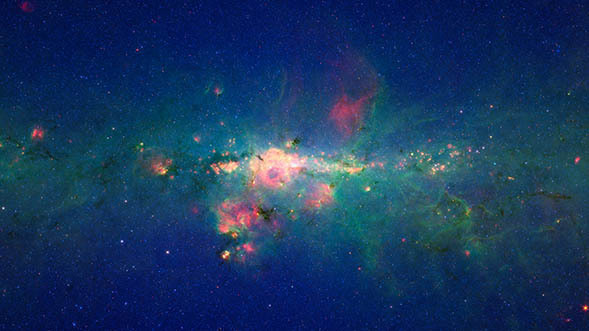
Spitzer's Spacecraft Bus was an octagonal structure at the base of the Observatory that housed the avionics and the warm electronic parts of the science instruments. The Spacecraft Bus supplied the science instruments with the electrical power generated by the Solar Panel Assembly, oriented and stabilized the telescope, collected, compressed and stored the science data for transmission to Earth, executed the stored commands to carry out the planned observing schedule, and communicated with the ground systems.
The bus structure had nine bays in which the equipment was housed, made up of four side modules, four corner modules, two heat pipe equipment panels, and six equipment panels. The equipment panels were sandwiched between the modules and were bolted and bonded together for maximum stiffness and structural integrity. On the outside of the bays, panels were bolted to the modules. These panels were removable, and provided access to the outer bays during the assembly and testing of the Observatory. The center bay of the nine was assessed through the top of the bus.
The Spacecraft Bus was also the mounting point for the star tracker and gyroscopes that allowed Spitzer to orient itself in space. The main antenna for communication with Earth, called the High Gain Antenna was mounted on the back of the bus, and the secondary antennae (the Low Gain Antennae) were mounted on the side. The maneuvering thrusters were mounted on outriggers attached to the bus.



